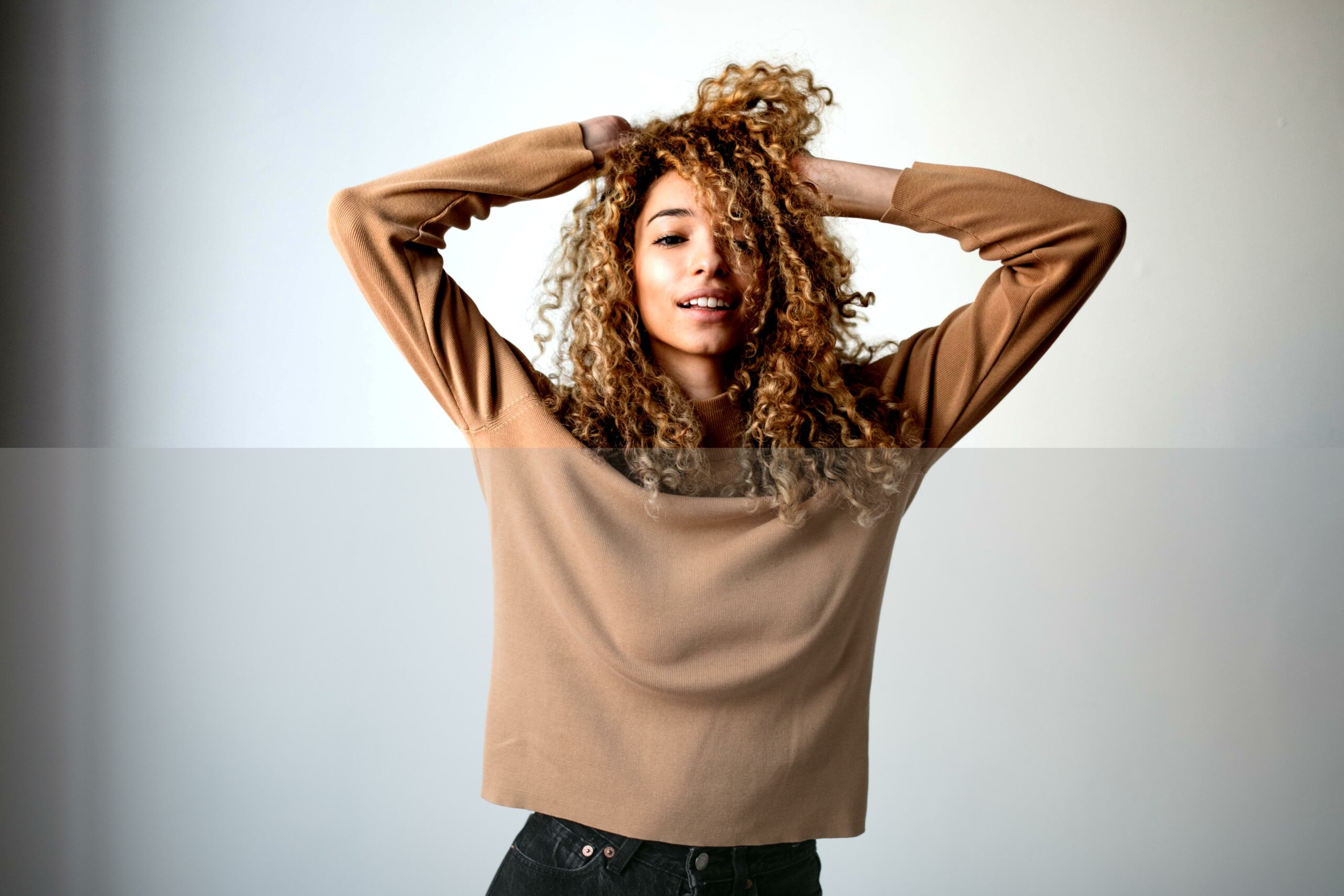Natural hair is a crown of unique textures, patterns, and endless possibilities. Yet, it often comes with misconceptions and myths that hinder the journey to healthy, thriving locks. In this article, we embark on an exhilarating exploration of facts and tips that will demystify those long-held beliefs surrounding natural hair care. Get ready to dive into a sea of knowledge, debunk myths, and embrace the true beauty of your natural hair. It’s time to unravel the truth and discover the secrets behind maintaining a luscious, vibrant mane.
Facts About Natural Hair
Did you know that our hair is not just hair, but a fascinating tapestry of facts and secrets? From the elements it contains to its growth patterns, natural hair is truly a marvel of nature. In this article, we’ll delve into some intriguing and lesser-known facts about natural hair that will leave you amazed.
Hair Elements: More Than Meets the Eye
Believe it or not, each strand of hair can contain traces of 14 different elements, including gold! Yes, you read that right—gold can actually be found in your hair. It’s a testament to the intricate composition of our hair and its ability to retain various elements from our surroundings. So, the next time you brush your mane, remember that it could be holding a tiny piece of precious metal.
An Oil-Absorbing Sponge
Have you ever wondered why your hair gets greasy after being submerged in water for too long? It turns out that hair acts as a natural sponge, absorbing oil out of the water. This unique characteristic helps to protect our scalp from becoming greasy and also prevents our hair from getting weighed down. So next time you take a dip, remember that your hair is doing some serious oil-absorbing work!
Hair Heroes: Cleaning Up Oil Spills
Imagine a group of eco-friendly volunteers keen on restoring the environment after an oil spill. Surprisingly, they enlist the help of human hair! That’s right, our hair can be used to clean up oil spills. Its ability to effectively absorb oil makes it a cost-effective and environmentally friendly solution for these unfortunate incidents. It’s like our hair has hidden superpowers that extend beyond making us look fabulous!
The Hair-Raising Anticipation
Here’s an interesting fact: the anticipation of sex can actually make your hair grow faster. It might sound unbelievable, but research has shown that the excitement and anticipation associated with sexual activities can stimulate hair growth. So, it seems that romance not only makes our hearts race but our hair follicles too! Talk about a beauty boost from the inside out.
Quantity and Shedding
Have you ever wondered how much hair is actually on your head? On average, a person has between 100,000 and 150,000 strands of hair adorning their scalp. However, the number of strands can vary depending on hair color. Natural blondes have the most hair, with towheads boasting a whopping 150,000 strands. Brunettes follow with approximately 100,000 strands, while redheads have around 90,000 strands. It’s fascinating how our hair color impacts its density!
And don’t fret if you notice a few hairs in your brush or shower drain—it’s natural. Between 50 and 80 hairs are shed naturally each day. Shedding is a normal part of the hair growth cycle and shouldn’t be a cause for alarm. It’s just your hair renewing itself, making way for fresh, healthy strands to take their place.
The Gender and Age Factors
Ladies, here’s a fun fact to share: women’s hair actually grows faster than men’s hair! So, if you’ve ever wondered why some men seem to have shorter hair despite equal time between cuts, now you know the reason. This difference in hair growth between genders is due to various biological factors.
But hold on, there’s more to the story. Hair growth also varies with age. The peak growth phase occurs between the ages of 15 and 30, where hair grows at its fastest rate. However, as we reach our forties and fifties, hair growth starts to take a back seat, exhibiting a sharp decline between ages 50 and 60. It’s a natural part of the aging process, but it doesn’t mean we can’t embrace and celebrate our natural hair at any age.
Slow and Steady Growth
You may have heard that hair grows about half an inch per month, but did you know that it actually only grows 1/72 inch per day? It might not seem like much, but it adds up over time. So, when you’re eagerly awaiting longer locks or looking to trim those split ends, remember that patience is key. Hair growth is a slow and steady process, but the results are worth the wait.
In conclusion, our natural hair is full of surprises, from its element composition to its abilities to absorb oil and even clean up oil spills. Its growth patterns, shedding, and even the influence of anticipation and age add an extra layer of fascination. Embrace the uniqueness of your natural hair, celebrate its diversity, and remember these intriguing facts that make it truly exceptional.
“Our natural hair is like a treasure trove of secrets, holding traces of gold, absorbing oil like a sponge, and even lending a helping hand during oil spills. It’s a testament to the wonders of nature and the beauty that lies within our locks.”
Curly hair is a mysterious and fascinating feature that many people desire. If you’re eager to learn more about the wonders of curly hair, you’ll be thrilled to discover some incredible facts. From the science behind the unique curl pattern to the best hair care tips for curly locks, these facts about curly hair will surely captivate you. So, if you’re ready to unlock the secrets of curly hair, click here to delve into the fascinating world of curls: facts about curly hair.
Facts About Natural Hair
Do you know the amazing natural hair facts that will leave you in awe? Discover the secrets to embracing your hair’s unique beauty and unleashing its full potential. From the benefits of embracing your natural hair texture to the science behind healthy, vibrant locks, there is so much to learn! So, if you are ready to dive deep into the world of natural hair care, click here for our comprehensive guide on natural hair facts. Trust us, you won’t want to miss out on this enlightening journey.
Click here to learn more about natural hair facts
In need of hair care tips specifically tailored for curly hair? Look no further! Our expert-approved guide on hair care for curly hair is here to help you embrace and enhance your gorgeous curls. From understanding your hair’s unique needs to recommended products and techniques, we’ve got you covered! So, if you are ready to embark on a journey towards taming and nourishing your curly locks, click here to explore our ultimate guide on hair care for curly hair. Your curls will thank you!
Click here for our ultimate guide on hair care for curly hair
Facts About High Porosity Hair
[youtube v=”ctSu1C1xbZk”]
Characteristics of High Porosity Hair
High porosity hair is characterized by thin or lifted cuticle layers that are unable to block water from escaping. As a result, when wet, this type of hair quickly dries within a matter of minutes[^1^]. The lifted or missing cuticle layers also create uneven and rough surfaces throughout the hair, leading to intense and complicated tangles[^2^]. Additionally, high porosity hair is prone to breaking easily when tension is applied, such as during braiding or twisting[^3^].
“High porosity hair quickly dries after wetting due to thinner or lifted cuticle layers, and it forms tangles easily. It is also more prone to breakage.”
Understanding High Porosity Hair
High porosity hair is commonly found in individuals with afro-textured hair, but it can also occur in other hair types. It is important to understand the characteristics of high porosity hair to effectively care for it. The thin or lifted cuticle layers make it difficult for the hair to retain moisture, leading to dryness and potential damage. Proper hair care routines should focus on moisturizing and protecting the hair strands[^4^].
“High porosity hair requires specific care due to its inability to retain moisture. Moisturizing and protecting the hair are essential for its health.”
Caring for High Porosity Hair
To care for high porosity hair, it is crucial to use products and techniques that promote moisture retention and minimize damage. Here are some tips for managing high porosity hair:
Moisturize: High porosity hair benefits from regular deep conditioning treatments to restore and maintain moisture levels. Look for deep conditioners that contain natural oils, such as coconut or argan oil, which help to hydrate and nourish the hair[^5^].
Seal in moisture: After applying a moisturizer or leave-in conditioner, seal in the moisture by using a lightweight oil or butter. This helps to minimize moisture loss and keep the hair hydrated for longer periods of time[^6^].
Avoid heat styling: High porosity hair is already prone to damage, so it is best to minimize heat styling as much as possible. If heat styling is necessary, always use a heat protectant to minimize the risk of further damage[^7^].
Be gentle with styling: When styling high porosity hair, a light touch is recommended to avoid excessive manipulation and breakage. Use wide-toothed combs or fingers for detangling and opt for protective styles that minimize tension on the hair strands[^8^].
“To care for high porosity hair, it is important to moisturize, seal in moisture, avoid heat styling, and be gentle with styling. These practices help maintain its health and prevent damage.”
In conclusion, high porosity hair has unique characteristics that require specific care. By understanding its traits and following appropriate hair care routines, individuals with high porosity hair can promote its health and manage its challenges effectively.
[insert conclusion here]
References
[^1^] Source 1
[^2^] Source 2
[^3^] Source 3
[^4^] Source 4
[^5^] Source 5
[^6^] Source 6
[^7^] Source 7
[^8^] Source 8
FAQ
Question 1: How many elements can each strand of hair contain?
Answer: Each strand of hair can contain traces of 14 different elements, including gold.
Question 2: How does hair absorb oil out of the water?
Answer: Hair works as a natural sponge and absorbs oil out of the water.
Question 3: How is human hair used to clean up oil spills?
Answer: Human hair is used by groups of eco-friendly volunteers to clean up oil spills.
Question 4: Does the anticipation of sex make hair grow faster?
Answer: No, the anticipation of sex does not make hair grow faster. Hair growth is not affected by sexual desire.
Question 5: How many strands of hair does the average person have?
Answer: The average person has roughly between 100,000 and 150,000 strands of hair on their head.
- Star Ring Trends: Etsy vs Amazon - March 28, 2025
- Boost Pollinator Habitats: Baby Blue Eyes Sustainable Farming Guide - March 28, 2025
- Protect Big Black Bears: Effective Conservation Strategies - March 28, 2025
















